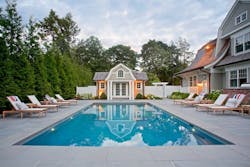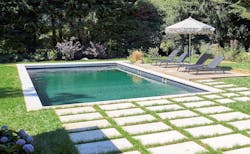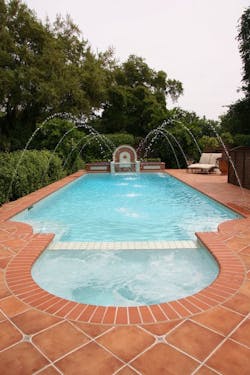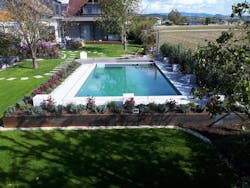Get Ready, Homeowners Want to Book Pool Installations Now for Next Year
Many homeowners discovered the joy of having a backyard to escape to during COVID-19. Some opted to construct in-ground pools for enhanced leisure time—those who did so early were smart.
Those who waited found that remodeling pros were already booked up. It’s wise to get ready for the deluge as you plan your schedules for 2022 and even beyond.
Pool Popularity Spikes
Numbers bear this out: The Pool & Hot Tub Alliance, which consists primarily of pool builders, says the industry average for new pool installations this past year jumped 24% and it’s expected to continue to rise.
“There’s a significant backlog now that will go well into 2022,” says Janay Rickwalder, vice president of marketing and communications for the Alliance
BioNova Natural Pools in Chester, NJ had a 500% increase in inquiries from the prior year. The company is already booking pool installations for 2023, says Allen Schnaak, co-owner and vice president of business development.
Photo: courtesy BioNova Natural Pools
Get Clients Ready for Pools Now
To get homeowners prepared, take Rickwalder’s advice, and urge potential clients to start now by having a permit pulled at their area’s building or planning department.
Also, recommend they start to firm up their idea of what type of pool might appeal. Finally, help them understand the long lead time before their pool will be operational, says Michael Glassman of Michael Glassman & Associates, a landscape design firm in Sacramento, Calif. Glassman says the average time after permits are issued is between 45 and 60 days.
Ask yourself and your clients these questions before you embark on the pool project:
What type of water should be used in a pool? Chlorinated, saltwater, or neither?
Most of the pools that landscape architect Marc Nissim of Harmony Design in Westfield, NJ designs are either saltwater- or chlorine-filled, he says. “Neither is better; it’s a matter of preference,” he says.
And then there are natural pools, like those constructed by BioNova, cleaned by biological filters of plants or a biofilm rather than chemicals or other devices such as UV or ozone generators, Schnaak says. “These are not ponds to swim in but are pools constructed to swimming industry standards, which have the look of a pond and its environment,” he says.
Photo: courtesy Michael Glassman & Associates
How large should a pool be?
The most popular size that Glassman constructs is 15 feet wide by 30 to 36 feet long. If it’s primarily for lap swimming, he may suggest narrowing the width to 10 feet and extending the length to 60 feet. Nissim says the pools he designs average 18 by 36 feet.
What about the shape of the pool?
Free-form, amoeba-shaped pools were most popular years ago, but rectilinear are more popular these days, and many homeowners find them better for lap swimming and play. Rectilinear pools are also more likely to remain in vogue and it will be easier to find an automatic cover to protect them, Glassman says.
What pool materials do they want?
According to the Alliance, the main types are concrete (gunite is a sprayed-on application versus a poured version), fiberglass, or vinyl lined. The choice is likely to affect the design’s flexibility, installation timetable, and maintenance needs.
Concrete/gunite usually requires the longest install time but securing a vinyl or fiberglass pool now may take longer because of the backlog in pandemic-time supply chains, Nissim says. Fiberglass and vinyl pools tend to be less expensive. Recycling a shipping container into a pool, like those from Canada-based Modpools, can also be useful.
Do pools need both deep and shallow ends?
As the design process begins, know that many homeowners want a deep area of 5 to 6 feet to play games such as volleyball, Schnaak says, and sometimes shallow areas of 3 feet for lounging or sitting on the popular Baja shelves, essentially extended steps.
How about the color of the interior lining?
Just like in homes, shades of gray have become popular for the color of the pool’s interior. “The darker the color, the better it is to reflect the natural surroundings,” Schnaak says.
What about the pool surround?
Less surround is more popular these days because of its minimalist, contemporary look. Consider using rectangular 20 by 36-inch stones such as quartz, limestone, and concrete pavers, and framing these with grass or artificial turf, the latter to eliminate the need to water and weed, Schnaak says.
Photo: courtesy BioNova Natural Pools
What other pool accessories should be considered?
Many homeowners want an adjacent hot tub or spa that looks like its part of the pool’s overall shape. Automatic covers, heaters (including solar panels), and cleaners can be helpful by making the pool more maintenance-free.
Schnaak also suggests energy-efficient LED lights so homeowners can enjoy a pool at night and a waterfall, spout, or jets to add the sight and sound of moving water. Glassman often introduces fire bowls and flames because of the appeal of having both fire and water features.
What’s the average price for a pool?
Advise your homeowners that a custom-designed, in-ground pool comes with a steep price tag based on materials selected, size, extras, and labor. BioNova’s different pools average between $75,000 and $125,000, Schnaak says.
Glassman puts the cost of most of his new pools at between $100,000 and $175,000, while Nissim says his gunite pools run about $125,000, and vinyl-lined ones about $60,000.
Annual maintenance is additional, often about $2,000 a year, Glassman says.
The good news for your pool clients is that a well-designed, well-maintained pool may last for years, easily 15, Nissim says.




